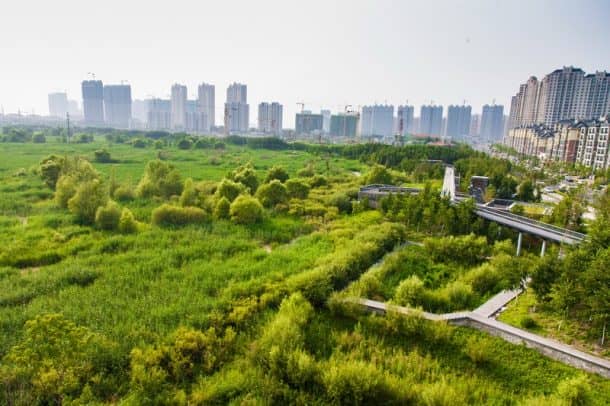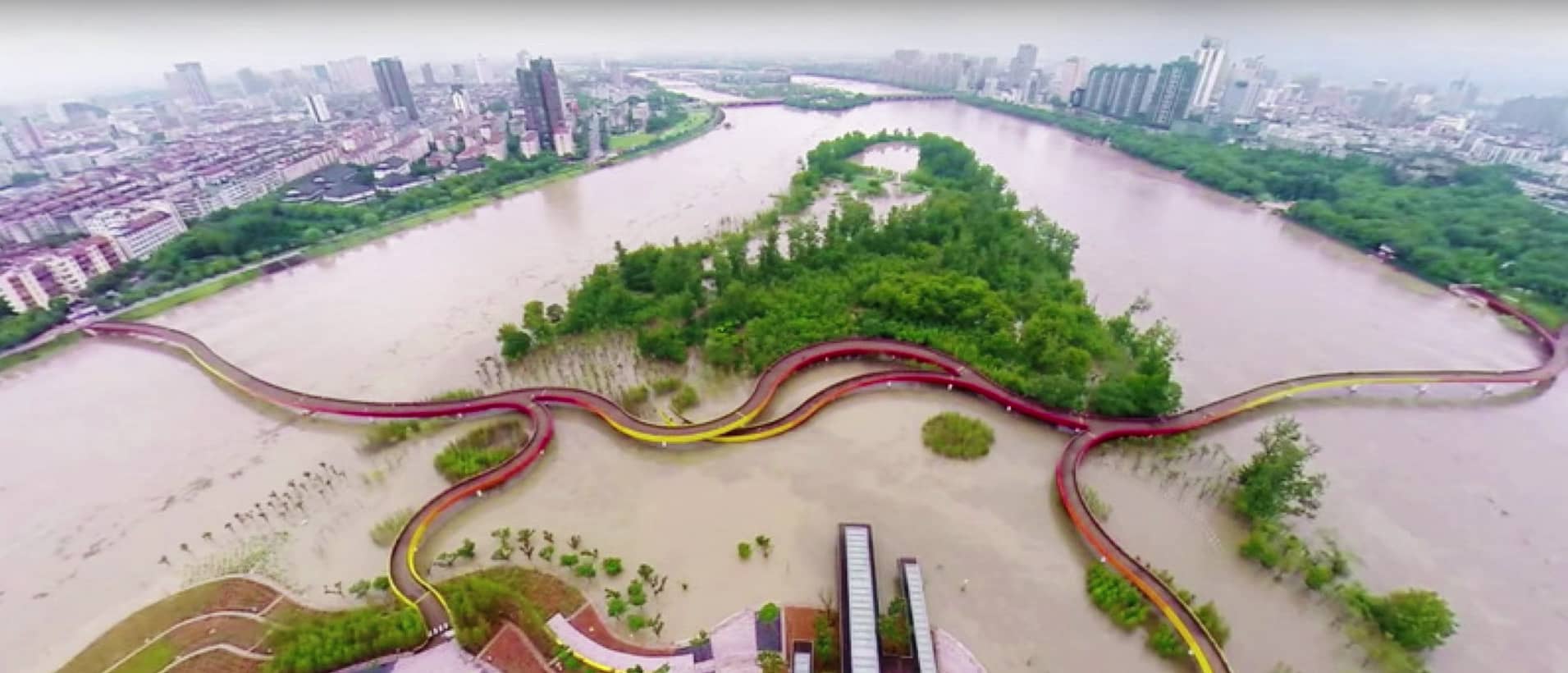Climate change is real and China is taking it seriously. One of the effects of the warming climate is flooding, increasing in frequency and severity and this has made a number of regions in China vulnerable and prone to such floods. China has never been the type to sit back and watch as things happen. It is actively pursuing the development of sponge cities as a way to counteract this climate change.
The sponge cities initiative was launched in 2015 and it invests in projects that focus on absorbing floodwater. These designs are currently being explored in 30 cities in China. These include Shanghai, Wuhan, and Xianeb. The project aims to have 80 % of the urban areas in China reuse a minimum of 70 % of their rainwater by the year 2020.

These cities have received $12 billion for these projects. Lingang is a planned city in Shanghai’s Pudong District and is working to be the world’s largest sponge city. Plantation on rooftops is already underway, as is the building of wetlands that store water and laying down permeable roads that are capable of storing runoff water.
There is no fixed process for making sponge cities, Each project is customized for the region and makes use of the previous techniques and improving them. Common strategies are using green permeable surfaces that incorporate plant life. Berlin is already following China and has adopted the concept of sponge cities.
In 2010, 700 people were killed and a further 300 were presumed missing as a result of landslides from flooding in China. 56 people were killed this July alone in addition to the destruction of towns as a result of excessive rainfall and flooding in southern China. China is taking a firm stand against this climate change and is even taking steps to counteract pollution rather than just finding means to control the consequences.
Others must follow the example of China, not just in making sponge cities but by taking steps to put an end to the problem. All these are just temporary measures against the effects of pollution and not a long-term solution. We need to fight pollution at the basic level if we do not wish for countless lives to be lost as a consequence.



